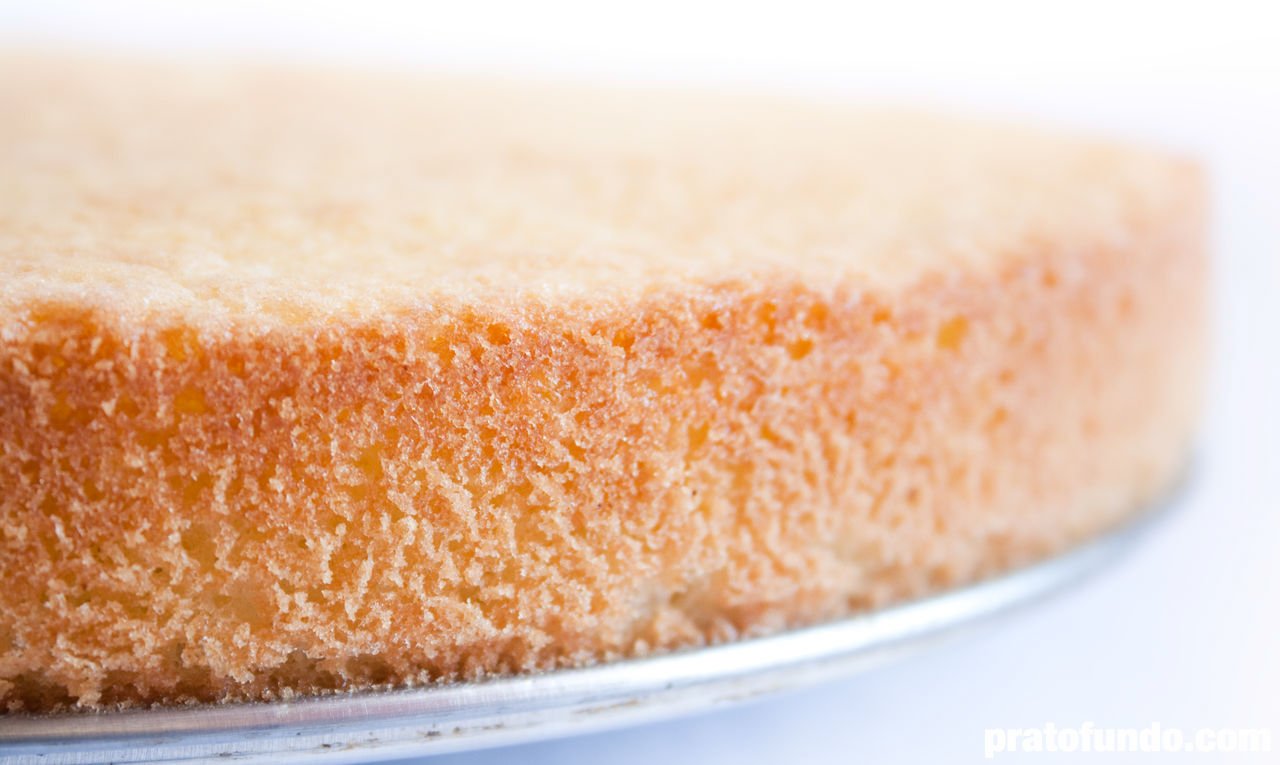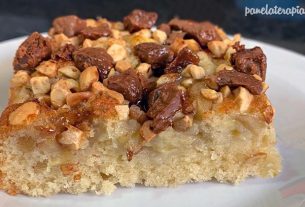There is no shortage of recipes and recipes for basic cakes in the world. This one is another one! It’s almost like a sponge cake, a sponge cake or a génoise. In other words, it’s really basic, with a neutral flavor, ideal for use in layer cakes.
It’s not quite the classic génoise, as some references use the hot method. I already prefer the cold. Translation: it is possible to find modes that indicate that the eggs and sugar should be beaten in a bain-marie. I’ve done it like this, but it’s a lot of work, 😛 So, I go in the cold and it’s great.
As you can see, I use butter to make the dough a little moister. In general, foam/sponge cakes made from eggs, flour and sugar are naturally drier than others. The use of some type of fat (butter, oil) reduces all this dryness a little. Still, some type of syrup is needed to moisten them.
The suggestion I offer results in two cakes measuring 20cm (diameter) and around 3-4cm in height. I don’t recommend baking all the dough in a single pan, as I haven’t tested it this way and there are other variables (temperature, time, humidity) that can affect the final result. If you just want one cake, I also leave the measurements of the ingredients, but remember that it will be a short cake.
Sponge Cake Dough
Makes: 2 20cm cakes
- 160 g wheat flour (sieved)
- 6 g chemical baking powder (about 1 tsp)
- 0,5 g refined salt (pinch)
- 6 eggs (room temperature)
- 160 g refined sugar (sifted)
- 80 g butter without salt (melted)
- 10 mL vanilla extract (1-2mL essence, optional)
1 cup: 250mL | 1 tablespoon: 15mL.
- Heat the oven to 180ºC. Grease two 20cm (diameter) cake pans with oil and line the bottom with baking paper, grease the paper too.
- Mix flour, yeast, salt and set aside.
- In a bowl, beat the eggs at medium speed and add the sugar. Continue beating for 15 minutes (on average), this egg cream should triple and become very sandy.
- Add the wheat flour mixture in three stages, mixing with a large spatula (or spoon). Do not mix too much, so that the aeration of the eggs is not lost.
- Place part (about two large spoonfuls) of this egg and flour mixture onto the melted butter. Mix well, let it become homogeneous. Then return to the egg mixture and stir to combine. Remembering to stir only what is necessary. Add vanilla, if using.
- Transfer the dough to the two previously prepared pans in equal parts, ideally the dough should be heavy. In general, the total quantity is around 734g, so each pan should have 367g. But these values may vary due to the eggs.
- Smooth the surface of the dough and place in the oven. Bake for 20-25 minutes at 180ºC, but do the toothpick test after 20 minutes. If it came out clean, it’s good.
- Leave to cool before unmolding.
- Quantities for a 20cm (diameter) cake: 4 eggs (room temperature) 125g wheat flour 125g caster sugar 20g melted butter 1 teaspoon baking powder Pinch of salt 1 tablespoon vanilla extract (optional)

Sign up for our newsletter and stay up to date with exclusive news
that can transform your routine!
Warning: Undefined array key "title" in /home/storelat/public_html/wp-content/plugins/link-whisper-premium/templates/frontend/related-posts.php on line 12
Warning: Undefined array key "title_tag" in /home/storelat/public_html/wp-content/plugins/link-whisper-premium/templates/frontend/related-posts.php on line 13




